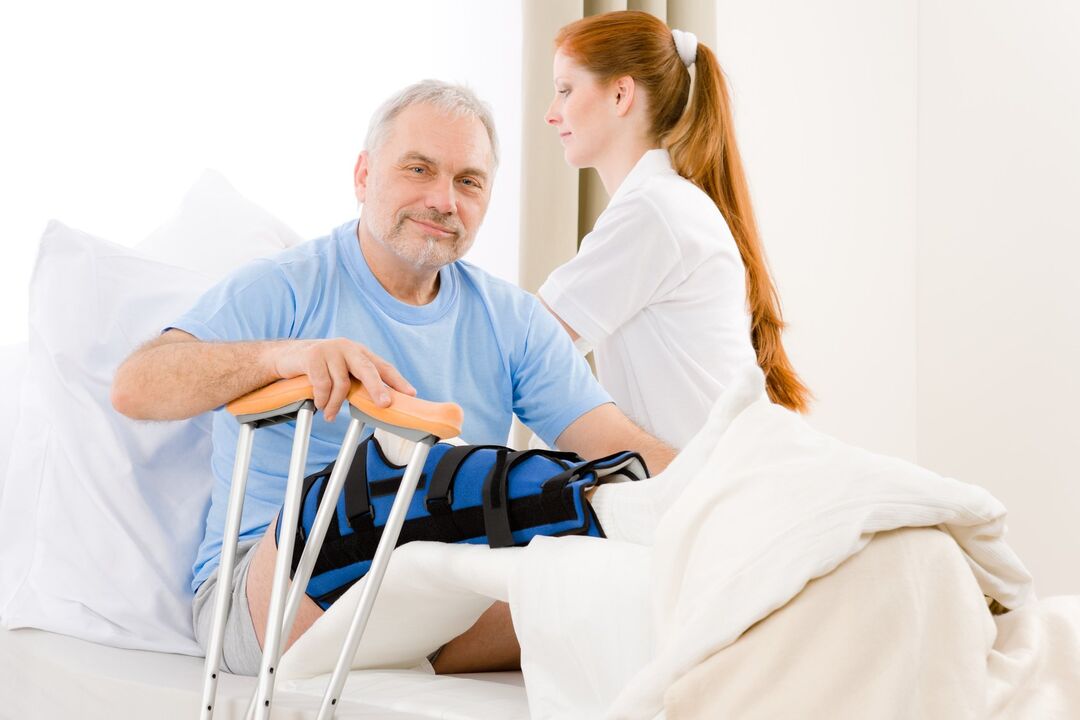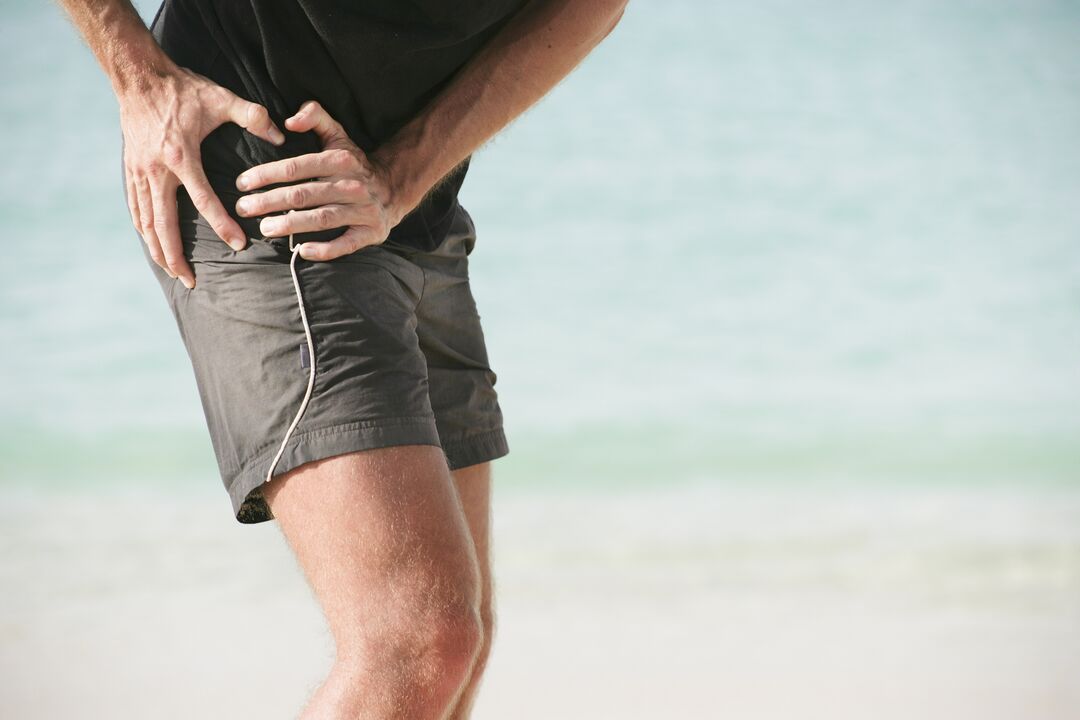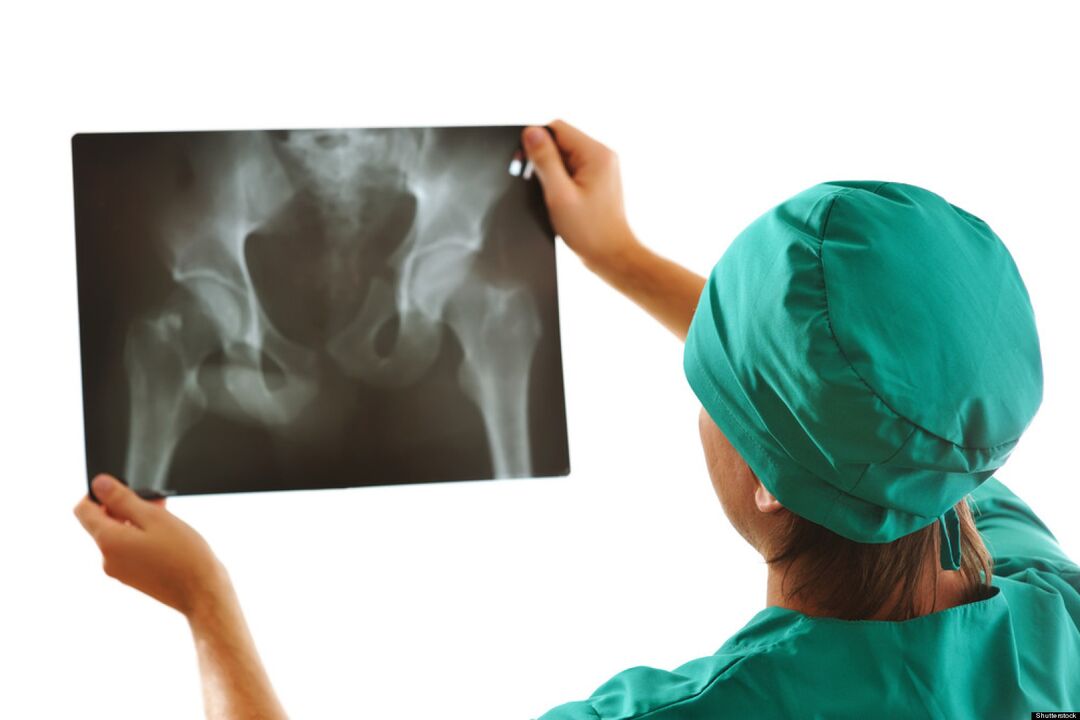
Osteoarthritis of the hip joint (ATS) is an indolent destructive disease. Under the influence of a number of reasons, during the development of the disease, irreversible changes occur in the structure and properties of hyaline cartilage, which leads to an increase in pressure on the articular surfaces and their deformation or fusion. Given that mechanical overload is considered one of the main causes of the development of the disease, the articulation of the hip joint is often affected by arthrosis.
Peculiarities of the anatomical structure of the hip joint
The hip joint (TC) is the junction between the pelvis and the thigh. This articulation makes it possible to shorten and extend the lower limbs, raise and pull the legs to the body, and walk. A person carries a large load on the hip joint from birth and throughout life.
From the side of the pelvic bone, the "acetabular" cavity participates in the articulation, from the side of the femur, its epiphysis. The acetabulum has a collagen lip along the edges, which acts as a kind of gasket that tightly holds the epiphysis of the femur in its socket. The depression in the center of the acetabulum is covered by a collagen membrane and is the place of attachment of the femoral ligament.
The composition of the TS capsule includes ligaments:
- femoral-hip – the strongest ligament that can withstand a load of more than 200 kg and prevents the excessive arch of the thigh back;
- femoral-pubic - responsible for abducting and shortening the thigh, thereby limiting its circular movements;
- femoral ischial - protects the car from concussion, reduces the load during walking and running;
- Circular (loop) - prevents dislocation and carries the head of the femur into the pelvic cavity and is the basis of the joint bag.
Multiple muscle groups and tendons allow the vehicle to move around three axes:
- Longitudinal (vertical).
- Transverse (horizontal, frontal).
- Sagittal (anterior-posterior).
Arthrosis of the joints can occur both in a healthy joint and become a continuation of existing diseases of the musculoskeletal system.
What is this disease?
Hyaline cartilage performs shock absorbing and protective functions against damage to joint surfaces. ATS is a disease in the process of development of which the structure of collagen cartilage fibers changes, which subsequently leads to their fragmentation and destruction. Fragments of cartilage fibers, if they get into the joint cavity, can cause an inflammatory process. Bare surfaces undergo changes in bone tissue caused by friction and increased pressure. Cartilaginous tissue remaining along the edges of the epiphyses compensatoryly grows with further ossification, leading to ankylosis (immobility of bone junctions). In the later stages, in the absence of adequate therapy, the patient completely loses mobility and becomes disabled. Destructive processes are provoked by various reasons.
There are the following types of arthrosis of the hip joint:
- Primary. Its etiology is not fully understood. Idiopathic (primary) arthrosis develops in a previously healthy joint. Most often it develops in the elderly.
- secondary. It is provoked by previous diseases of the articular apparatus, congenital anomalies of development, changes in the work of organs and systems of human vital activity.
The disease develops in one joint or affects both at the same time.
Causes of the disease
Among the causes contributing to the emergence of the disease and its progression, the following stand out:
- Hereditary genetic predisposition to the development of the disease.
- Bone joint injuries (dislocations, fractures, sprains and tendons).
- Unbearable systemic strength and physical activity.
- Excess weight.
- Functional disorders of the endocrine system (diabetes, psoriasis).
- Congenital pathologies of the structure and development of the musculoskeletal system.
- Professional characteristics of labor activity.
- Poor local circulation.
- Previous diseases caused by pathogenic flora.
- Legg-Calve-Perthes disease.
- Metabolic disorders (gout).
- physical inactivity.
- Immune diseases.
These reasons cannot always cause ATS. Most often, activation of pathological processes can be provoked by:

- increased stress and physical activity;
- constant overwork;
- hypothermia of the car or the whole body;
- sudden lifting of heavy objects;
- hormonal imbalance;
- radiation exposure.
Symptoms of the disease
Symptomatic manifestations of ATS are similar to manifestations of arthrosis of other joints.
The main characteristic symptoms of this disease are:
- Stiffness in the morning or after prolonged immobility.
- Decreased range of motion, change in gait.
- Pain, first caused by mechanical or physical stress, then constant.
- Manifestation of crackling, crackling and clicking during sudden movements.
- Marked lameness on the affected limb.
- Formation of contractures (restriction of passive movements).
- Narrowing or closing of the joint space (X-ray sign).
The severity of signs of arthrosis of the hip joint depends on the degree of development of the disease and the reactive capabilities of the patient's body.

Stages of coxarthrosis
Depending on the clinical manifestations, 4 stages of arthrosis of the hip joint can be distinguished:
- Arthritis of the 1st degree of the hip joint has no pronounced pain and other manifestations. The stage is difficult to diagnose, the disease can be detected by biochemical analysis of hyaline cartilage tissue and determination of insufficient amount of glycosaminoglycans. At the beginning of physical activity, the patient feels joint pain and rarely pain.
- Second-degree arthrosis of the hip joint is characterized by changes in the density and elasticity of cartilage fibers. Cracks and fissures appear. Depreciation functions are reduced. The pain intensifies, radiates to the groin area, the movements of the affected limb are limited.
- In the third degree, stratification of cartilage fibers occurs with greater intensity. Joint surfaces experience excess pressure, foci of ischemia develop. Cartilaginous tissue grows along the edge of the epiphyses. The sensation of pain in the joint area of the damaged bone does not depend on the state of activity and rest. With any movement, the joint "squeaks" and "cracks". The range of motion is reduced on all axes.
- The fourth degree is characterized by the impact of the surfaces of the joint components with the formation of ulcers and depressions. The articular head of the femur is poorly fixed in the acetabulum, which causes a violation of the comparison and separation of the articular surfaces. During this period, the patient experiences excruciating pain caused by the narrowing, sometimes closing, of the joint lumen and compression of bundles of nerve fibers and blood vessels. Movement is limited, sometimes completely.
Classification of pathological changes caused by ATS is necessary to understand the mechanism and features of the disease. Determining the severity of the disease helps to determine the correct tactics of treatment and disability (in case of severe disease).
possible outcomes
Progression of ATS leads not only to the deformation of the femoral head and pelvis, but also to the development of pathological processes in the functioning of the articular apparatus as a whole.
Pathologies caused by complications of hip arthrosis:
- synovitis (inflammation of the synovial membrane of the joint);
- aseptic necrosis of the femoral head;
- destruction of joints (osteonecrosis);
- inflammation of the joint bag with a change in the amount of synovial fluid;
- Ankylosis (immobility of bone articulation) partial or complete;
- Contractures (restriction of mobility and inability to extend the limb).
The development of complications of ATS always leads to deterioration of the patient's general condition, loss of his quality of life and loss of unaided movement.
Diagnostic methods
It is difficult to diagnose arthrosis of the hip joint at the initial stage. Symptomatic manifestations become noticeable only when epiphyses of bones and nerve fibers are involved in the pathological process.

In the stage of progression, during the medical examination, the following is noted:
- visual change in the joint contour;
- palpation pain;
- sometimes pastosis of periarticular tissues;
- Shortening of the affected limb.
The main role in the diagnosis of ATS is assigned to radiological examination. As auxiliary diagnostic methods are used:
- Ultrasound, magnetic resonance imaging.
- CT scan.
- Puncture of joint lubrication (synovial fluid).
- Diagnosis using an arthroscope (microprobe).
- Clinical and biochemical laboratory tests of urine, blood.
Timely diagnosis improves the prognosis of treatment and the subsequent life of the patient.
How to apply for disability?
This disease cannot be completely cured. To confirm the right to social benefits and after passing the examination by narrow specialists, to appoint a disability group, you should consult a doctor.

Indications for granting disability in case of arthrosis of the hip joint are:
- Oligoarthrosis (damage to no more than 2 joints) TS 2 degrees;
- combined arthrosis of the 2nd degree of TS and arthrosis of the 3rd degree of the knee joint;
- reduction of the length of the affected limb by more than 6 cm;
- A jet stream automated telephone exchange, documented.
The following will help you determine the disability group:
- carefully collected anamnesis;
- Medical Consultative Commission (MCC) report;
- results of diagnostic studies;
- Passing the Medical and Social Expert Commission (MSEC).
If the decision of the expert commission is negative, it can be appealed to higher authorities.
Prevention
Preventive measures are an easy way to prevent the development of this disease. Prevention measures include:
- Maintaining an active lifestyle.
- Control of body weight indicators.
- Optimizing nutrition and mode of work and rest.
- Reduced mechanical and physical load.
- Treatment of diseases of viral and infectious etiology.
- Prevention and prevention of injuries at home and at work.
- Regular preventive examination.
conclusion
The answer to the frequently asked question: "Is it possible to cure arthrosis of the hip joint? ""Experts give a negative answer. It is impossible to completely restore the destroyed cartilage tissue, just as it is impossible to completely correct the deformation and destruction of the bones in the joint. Do not ignore even minor manifestations of hip arthrosis, this reduces the chances of preventing the further development of the disease.














































